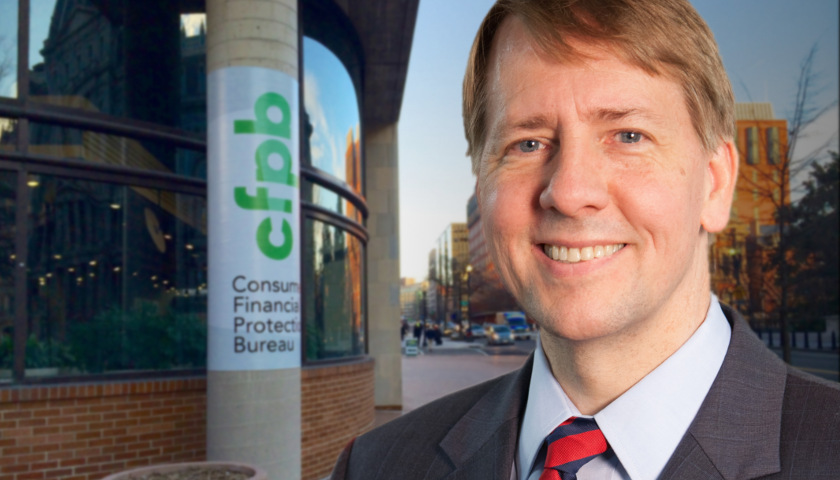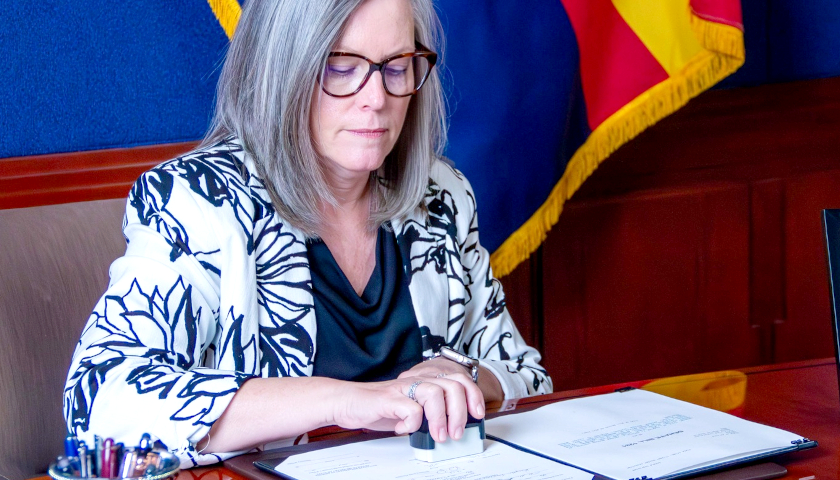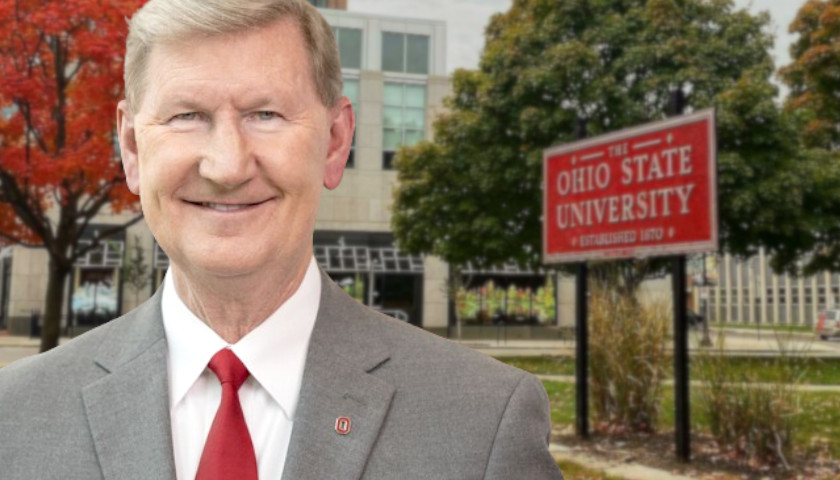The core message of Richard Cordray’s campaign for governor of Ohio is that he returned “$12 billion” to consumers while heading up President Obama’s Consumer Financial Protection Bureau.
The claim of returning a specific amount of money to consumers appeared in countless CFPB press releases that predate his run for governor. Such claims have since worked their way into campaign ads and news articles. But it’s interesting that these claims are never questioned by any investigative reporters in the mainstream media.
Cordray’s campaign spokesman, Mike Gwin, pounded the theme ahead of Thursday night’s rally with Obama in Ohio:
“Rich Cordray is proud of the work he did at the CFPB to take on predatory lenders and put $12 billion back into the pockets of 30 million Americans who had been cheated or mistreated,” Gwin told the Associated Press.
Cordray defaulted to the same theme on Twitter, aiming for young voters mired in student-loan debt.
Ohio students deserve a governor who isn't in the pocket of student loan companies. Unlike my opponent, I’ve spent my career fighting against predatory lenders and returning money to students who were cheated or mistreated. https://t.co/1YcKrHG4bC
— Rich Cordray (@RichCordray) September 12, 2018
Notice how Cordray uses his own experience as a DC regulator to attack his opponent, Mike DeWine, the current Ohio Attorney General who played no role in the matter and has nothing to do with the CFPB or “mistreated” bank customers.
The fact is, “mistreating” a customer is not a crime.
Mistreating a consumer is very different than illegally scamming a consumer. People get misreated every day, by a fast-food worker who was in a bad mood, by a waitress who’d been on her feet too long at the end of her shift.
But Cordray lumps it all together — mistreatment and law-breaking — to make it sound like he is in the business of handing out endless checks to folks who may have felt they were wronged in some way by a business. Cordray never backs up the claim that he actually returned all of the $12 billion to people who were actually harmed by an illegal corporate action.
That’s because he can’t.
According to sources familiar with the way CFPB worked, less than half of the $12 billion was actual restitution and even some of that was debt that banks would have reduced or written off anyway.
Take the case of Ally Financial. It supposedly paid $98 million to car buyers, but many of these buyers probably were never harmed by “discriminatory” loans from Ally. A chunk of that money was paid in what’s called civil money penalties or CMPs. That’s a fancy name for fines, and all of this fine money did not go into the pockets of harmed consumers.
The Dodd Frank Act allows the CFPB to pay CMPs to victims the CFPB identifies as being harmed in “any” (other) CFPB matter. The CFPB sends the CMPs to a trustee, which does not have to publicly report the money’s final destination.
By the CFPB’s logic, if they paid money to consumers, that proved the consumers had been harmed. But, to date, there has never been a full accounting of exactly where all this money ended up going. Was everyone who received money through this regulatory trail actually a harmed consumer?
Not at all, according to a June 17, 2015 report by Investor’s Business Daily. The IBD explains how the CFPB was diverting potentially millions of dollars in settlement payments for alleged victims of lending bias to a slush fund for poverty groups tied to the Democratic Party.
We’ve seen this before at the Justice Department, which Congress earlier (in 2015) scolded for ‘shortchanging’ alleged victims of Bank of America and Citibank the same way. Justice funneled at least $150 million into a slush fund for Democratic interests, unconstitutionally avoiding Congress.
“Now, a little-noticed item on the CFPB’s website reveals the powerful new agency is launching its own scheme to provide backdoor funding for nonprofit urban groups politically aligned with Democrats.”
The CFPB planned to create a so-called Civil Penalty Fund from its own shakedown operations targeting financial institutions. Through ramped-up (and trumped-up) anti-discrimination lawsuits and investigations, the agency would bankroll approximately 60 liberal nonprofits, many of which are radical leftist pressure groups, IBD reported.
IBD obtained a list of groups eligible for the bank payouts, as approved by former CFPB Director Cordray and former Labor Secretary Thomas Perez. It includes:
- The Legal Aid Society of the District of Columbia, whose directors include senior Democratic National Committee officials; the self-described “policy advocacy” group has lobbied Congress for more welfare spending at least 108 times since Obama took office.
- The Mississippi Center for Justice, whose stated mission is “advancing racial and economic justice” and “attacking predatory lending practices.”
- People’s Community Action Corp. of St. Louis, which had seated Obama appointees and Democrat lawmakers on its board.
On its website, the CFPB essentially admits it’s operating something akin to a slush fund, not compensating consumers unless it’s “practicable,” which is bureaucratic doublespeak meaning “seldom.”
In accordance with the Dodd-Frank Act and the Bureau’s Civil Penalty Fund rule, the Fund can only be used for two purposes: to compensate eligible harmed consumers and, to the extent that victim payments are not practicable, to provide funding for consumer education and financial literacy programs. If victims cannot be located or it is otherwise not practicable to pay victims, the Bureau may keep the money in the Fund for victims in future cases, or the Bureau may use money in the Fund for consumer education and financial literacy programs.”
Slim pickings for consumers
And, according to Forbes, CFPB’s anti-arbitration rule, which allowed for ever-expanding class-action suits targeting more and more companies, actually made it tougher for consumers to recover money:
Consumers will reap $342 million a year in payments from those new federal class-action settlements, the CFPB reckons, although elsewhere in the report the agency acknowledges some discouraging statistics about what that really means to the average customer. The agency studied 251 class actions and found an average payout of $32, and that number was skewed upward by $1 billion in settlements in a overdraft cases that accounted for the bulk of the money in the study period. Elsewhere in the report, the CFPB says 87% of class actions resulted in no payment to consumers and even in those that did have favorable settlements, the weighted average claims rate was 4%.
“That fits with other studies showing the odds of anybody collecting money in a class action are less than 1 in 400, or less than the odds of a straight flush in a 7-card poker hand.”
The combination of Cordray’s draconian regulations and deceptive public relations – he was doing it all to protect the defenseless consumer – was devastating for the economy and the free market system that drives economic growth, said Jon Hosted, Ohio’s secretary of state and a candidate for lieutenant governor.
“Richard Cordray used the CFPB to overregulate small, community banks,” Hosted said. “While big banks got bigger, small banks got crushed. Cordray worked to put the little guy out of business.”
During Cordray’s tenure at the CFPB Ohio went from having 238 banks to having just 135.
But, because it was Obama and a Democrat administration, most of the major media never looked beyond the press releases.
And now, they are not questioning the campaign ads and the sound bytes.
Cordray’s core campaign message is at worst a total lie and at best a pretty significant fudging of the facts.
– – –
Anthony Accardi is a writer and reporter for The Ohio Star.






[…] The Ohio Star reported earlier this week, even the claim of “returning $12 billion” to consumers was highly […]